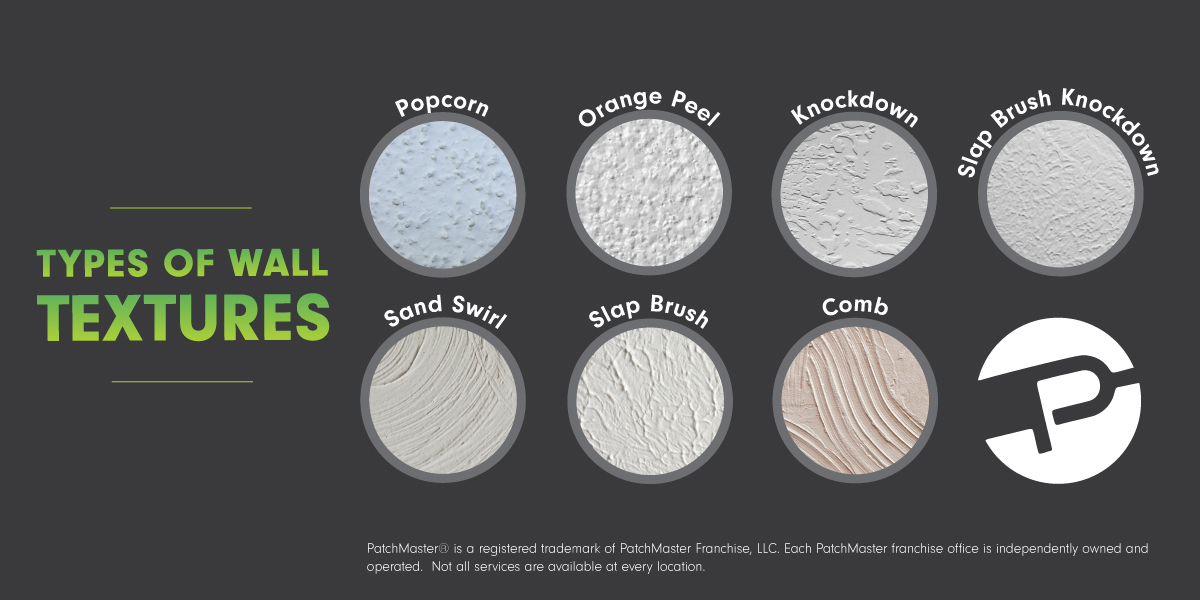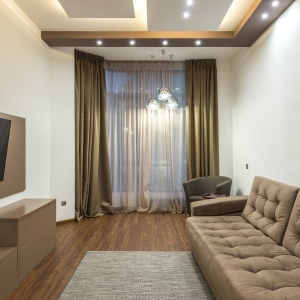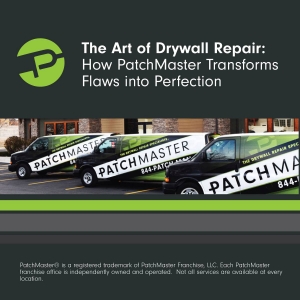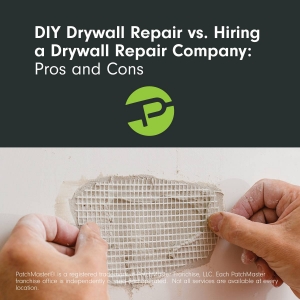Texturing your drywall can add a unique, personal touch to any room. And, depending on where you live, some textures are more common than others. Here, we cover the most common types of drywall types and textures found in most homes, offices and environments.
Popcorn
Named for its distinctly textured look, popcorn textured drywall became popular in the 1960s and ’70s. If you’ve been in or live in a home that was built during this period, you’ve probably seen popcorn ceilings many times. This drywall look is applied with a hopper gun, usually using a mix of stucco and Styrofoam. You can choose from large, medium, and small popcorn texture, and popcorn ceilings have the added benefit of sound dampening properties. Removal can be difficult, so it’s best to contact a professional. You can also learn more about popcorn ceiling removal on our blog.
Orange Peel
The orange peel texture looks very much like its namesake - a citrus rind, with slight depressions and dimples. A mixture of drywall mud and water is sprayed on the surface, then rolled over. This type of texture can be done in either fine, medium, or heavy styles. Orange peel is a spatter texture that has a smoother look than popcorn, so it’s a nice option to increase the durability of your walls. This texture is not easy to achieve, so it is best to call in your local drywall professional to complete the job.
Sand
Spray sand texture is one of the easiest applications to achieve, as it just involves mixing sand with your water and primer, and letting it rest. Then, the mixture is sprayed on the wall or ceiling with a spray gun, creating the appearance that somewhat mimics coarse, wet sand. The texture is often used on walls or ceilings for its durability and ease of application.
Lace
A lace texture is a layered design that looks like old-fashioned Spanish lace. It's common on exterior stucco walls, but can also be used indoors. The look is created by spraying drywall mud and water on the surface. After that, a trained texture technician flattens the peaks with a finishing knife.
Stomp Brush
To create the stomp brush texture, a large, long-bristled brush dipped in drywall mud is pressed into the ceiling surface, then the mud is pushed around to form thin ridges. The pattern is repeated until the entire ceiling has been covered. It is important to note that stomp brush patterns can vary depending on the technique used by the painter and the type of brush used, so having an experienced technician is important to create (or re-create) flawless texture matching.
Rosebud
The rosebud texture and the stomp brush texture have a lot in common; the main difference is that the rosebud texture looks like a flower with long petals.
Sand Swirl
Using a brush with thick bristles, such as a wallpaper brush, your technician can create a sand swirl texture. There are many varieties of arched designs, such as half fans, spirals, and interlocking C shapes.
The application of this drywall is another advanced technique requiring practice, but the results can be impressive.
Comb
A toothed trowel is used to create the stylized comb texture. In most cases, it is designed as an even row of half fans or rainbows. When the mud is still wet, the trowel is used to make the shape while the pattern is being applied by one technician.
Knockdown
The knockdown method involves spraying, stomping, or brushing drywall mud onto a surface, and then flattening it with a tool while it is still wet.
Among the knockdown, variations are skip trowel and Santa Fe textures, as well as orange peel and lace patterns. Materials used, the angle of the trowel or knife, and the number of layers added create subtle differences, among other stylistic factors.
Venetian
Venetian texture is an extremely old and advanced technique. In the first step, plaster and marble dust are mixed together and applied in thin layers. Final sanding and buffing adds an extra dimension and artistic flair to the walls and ceilings by giving them a textured, but smooth, appearance.
As drywall experts, PatchMaster has come across the majority of the styles and textures referenced above. In every case, our skilled technicians remove or match the environment’s texture without creating a huge amount of dust, leaving it completely flawless. Contact us today for a free consultation or call 1-844-PATCH-MAN (U.S.) or 1-833-WE-PATCH (Canada).






